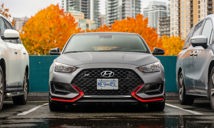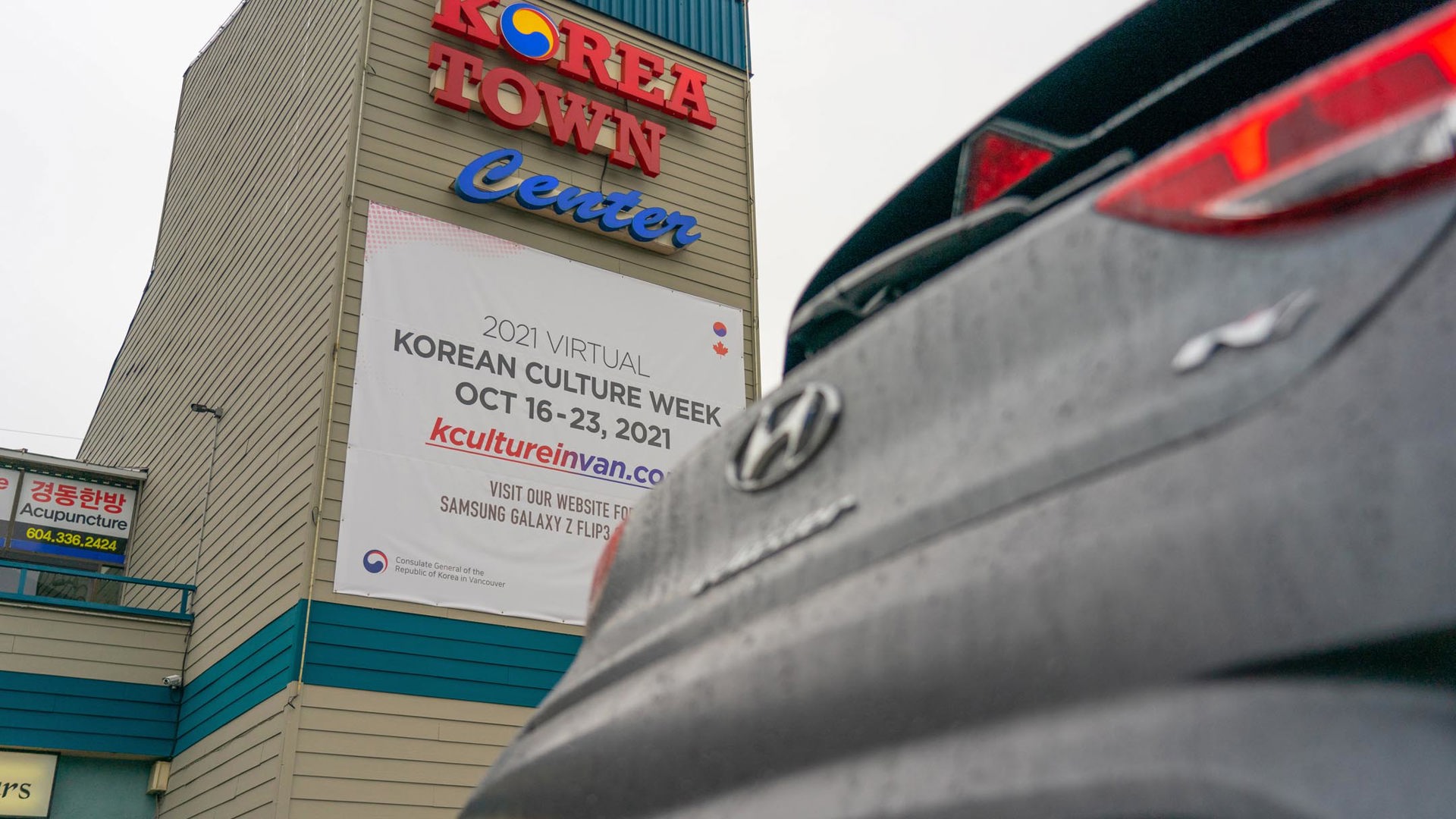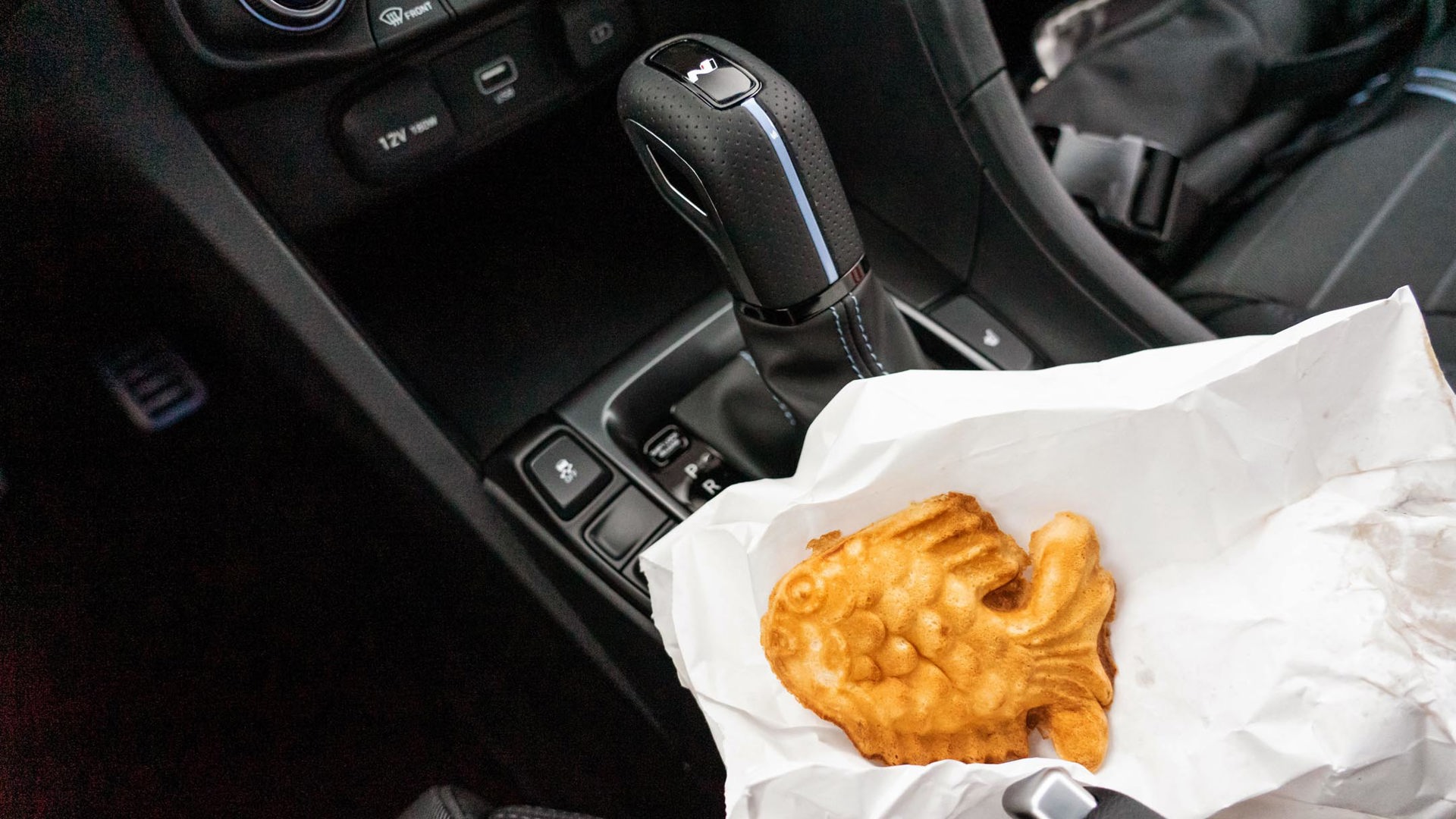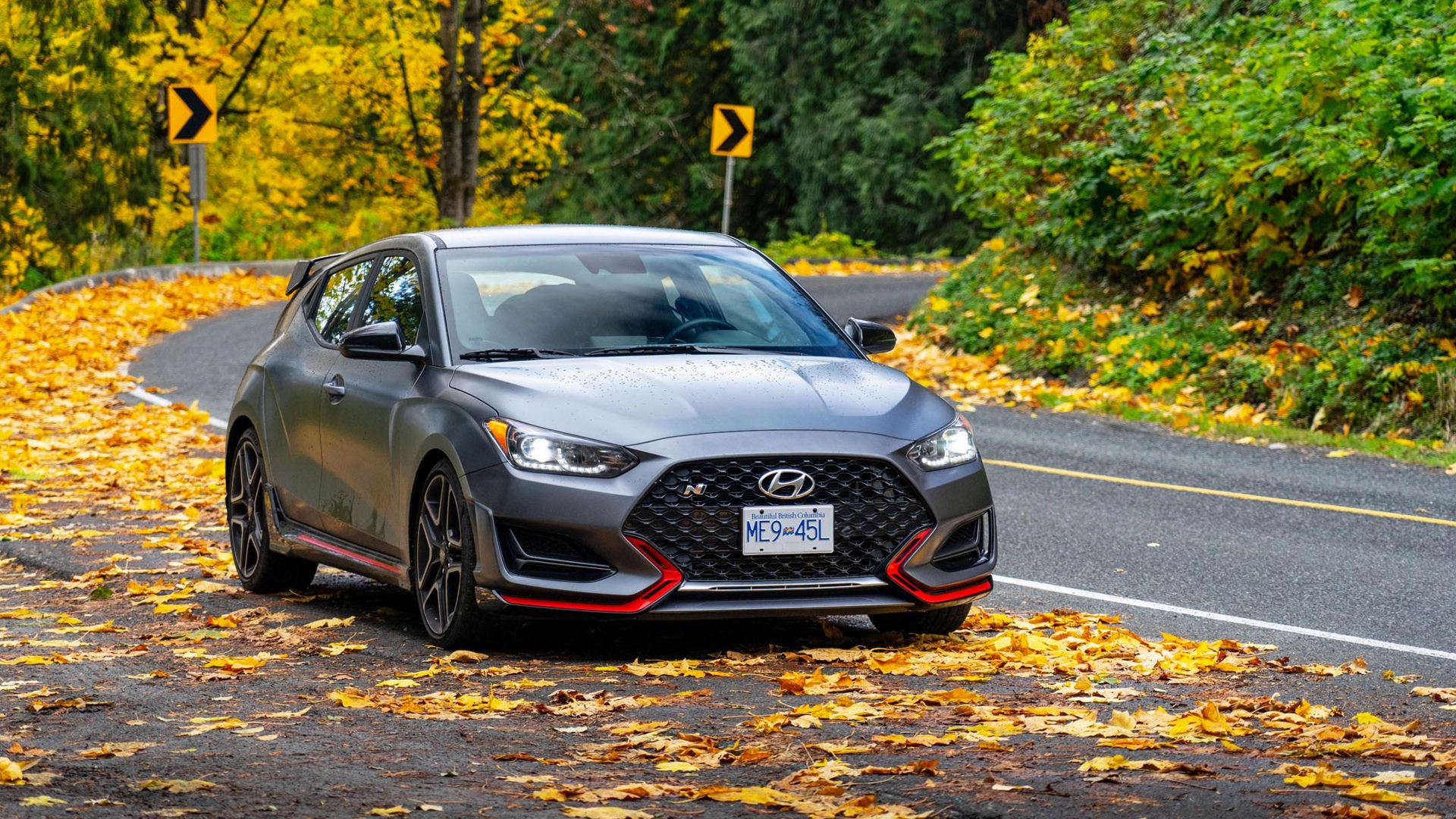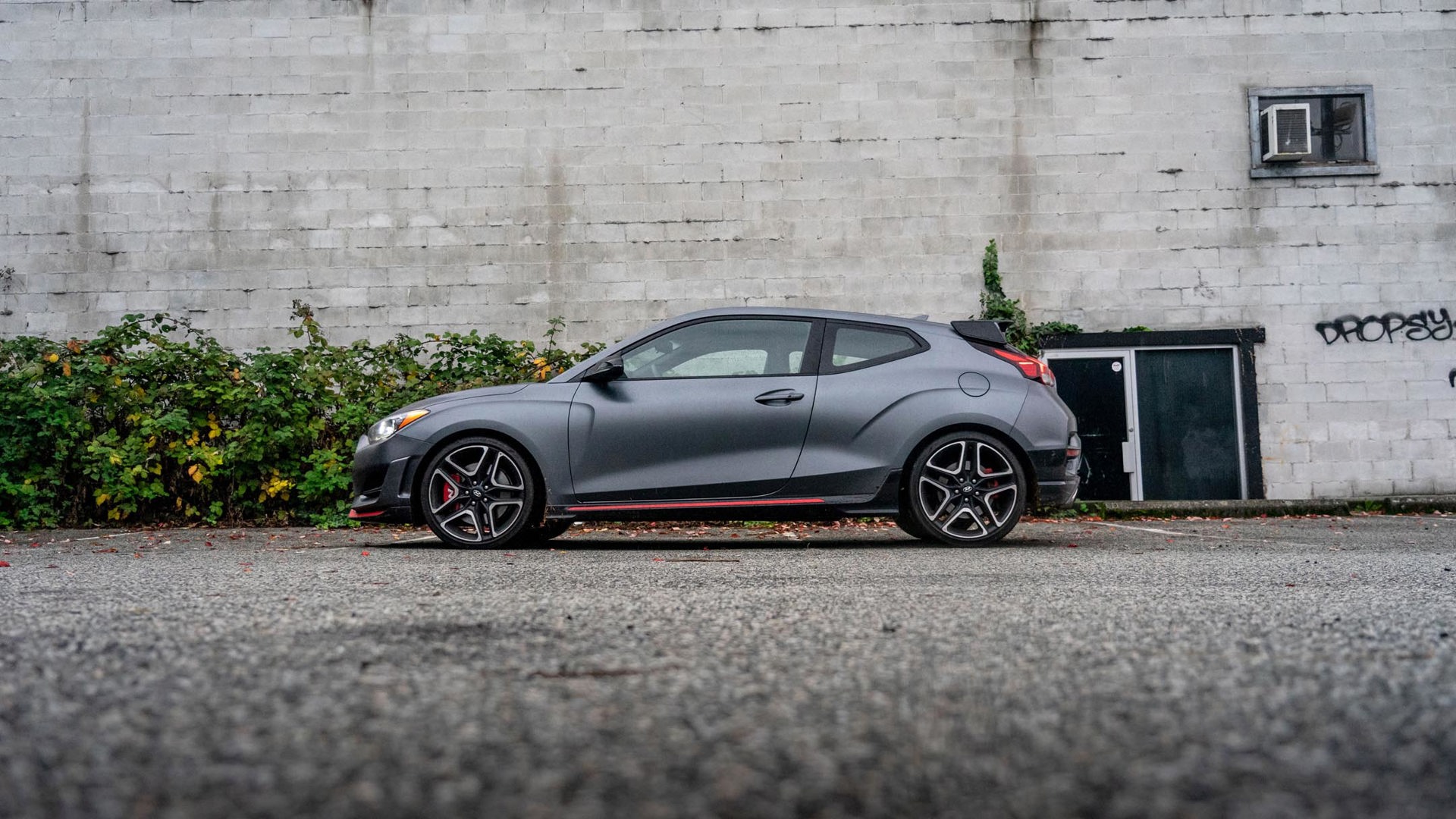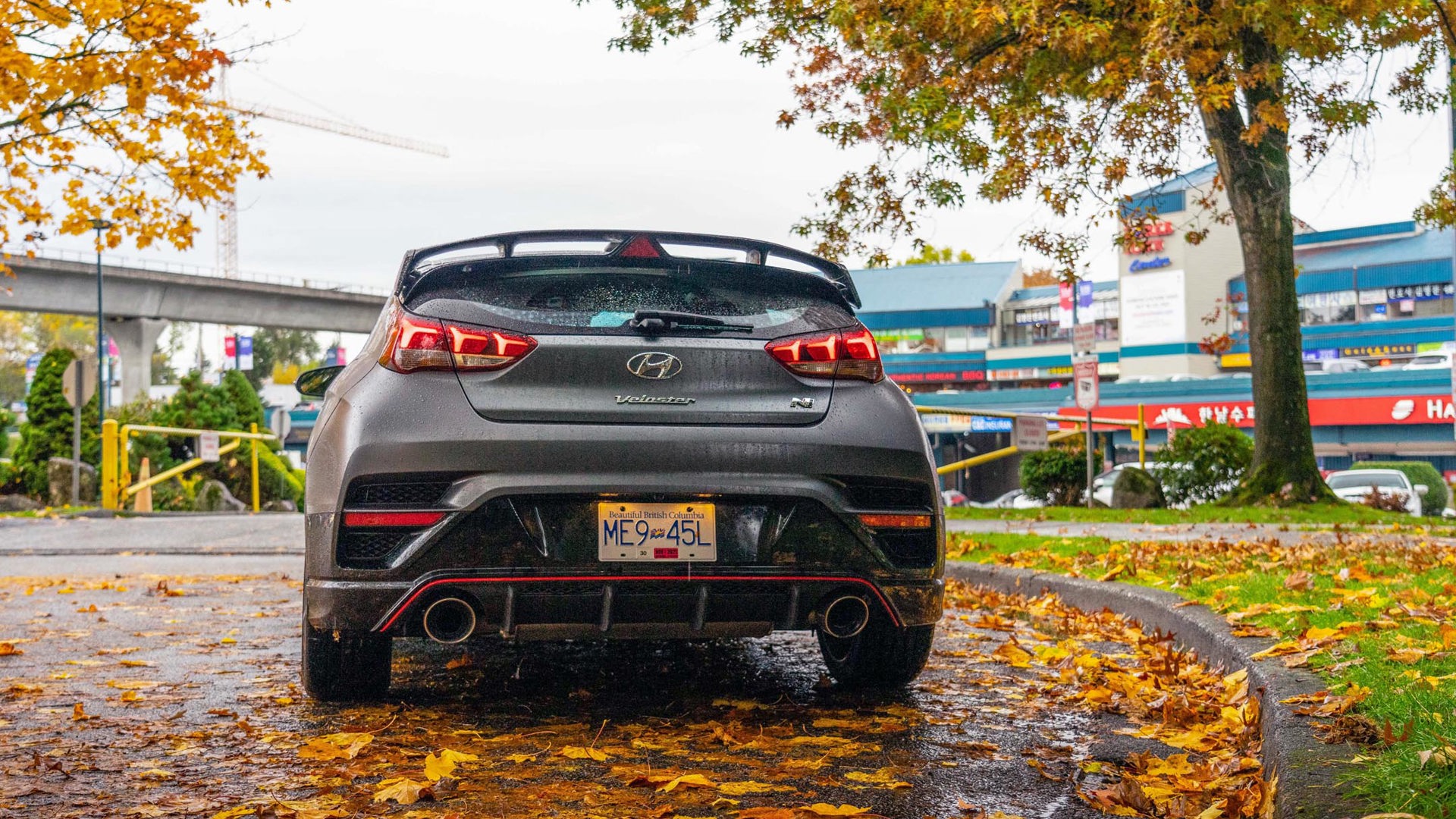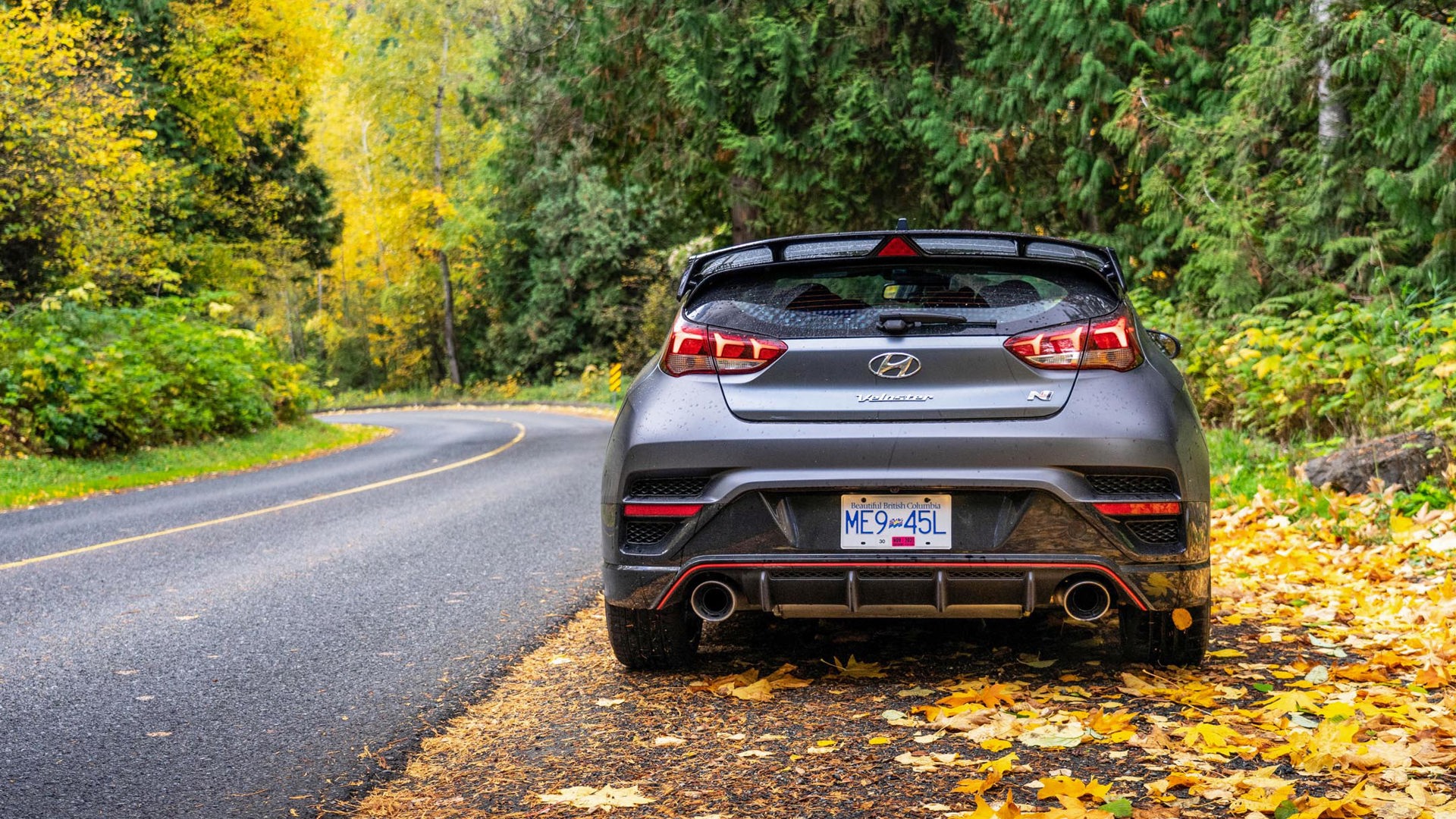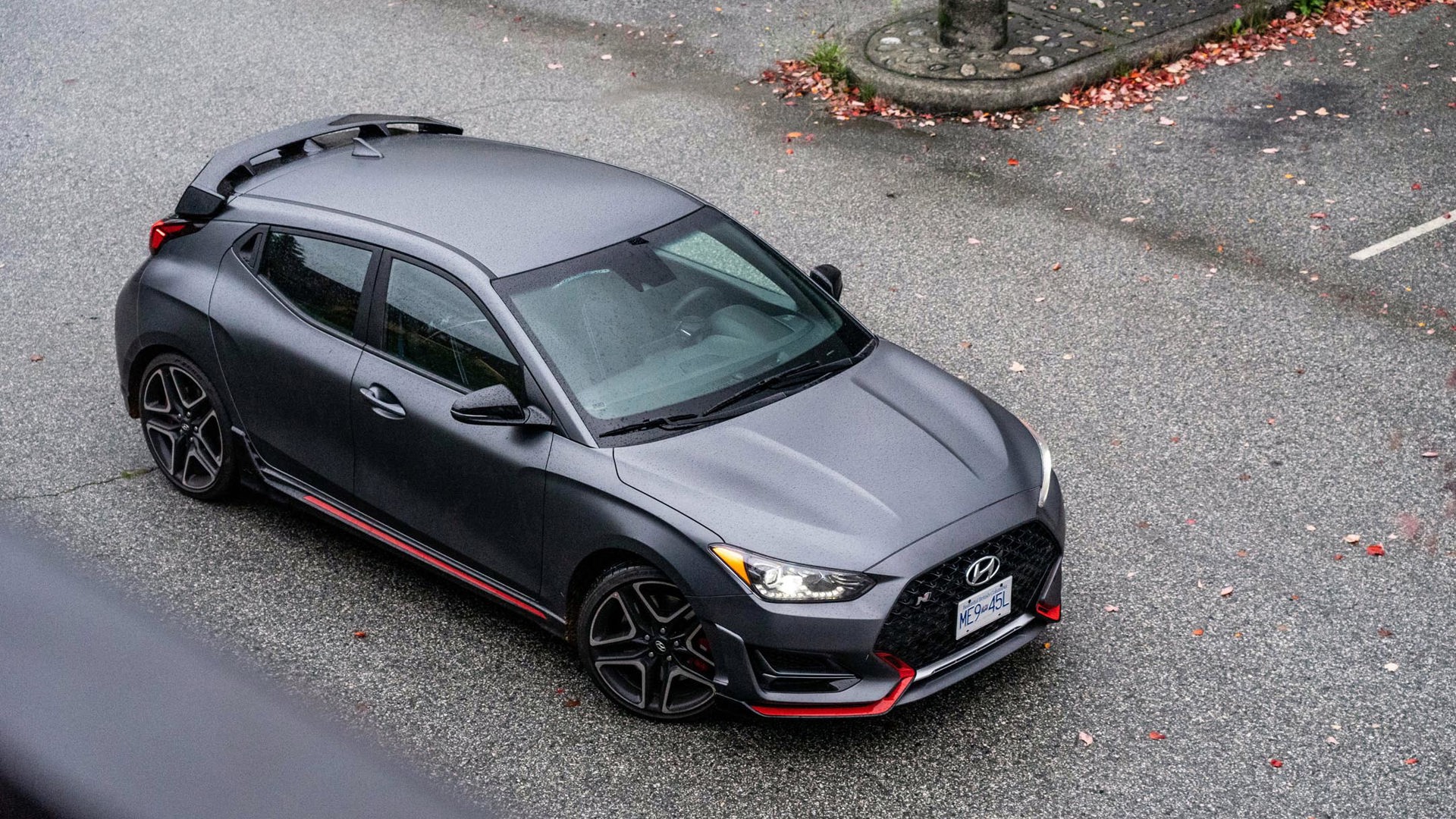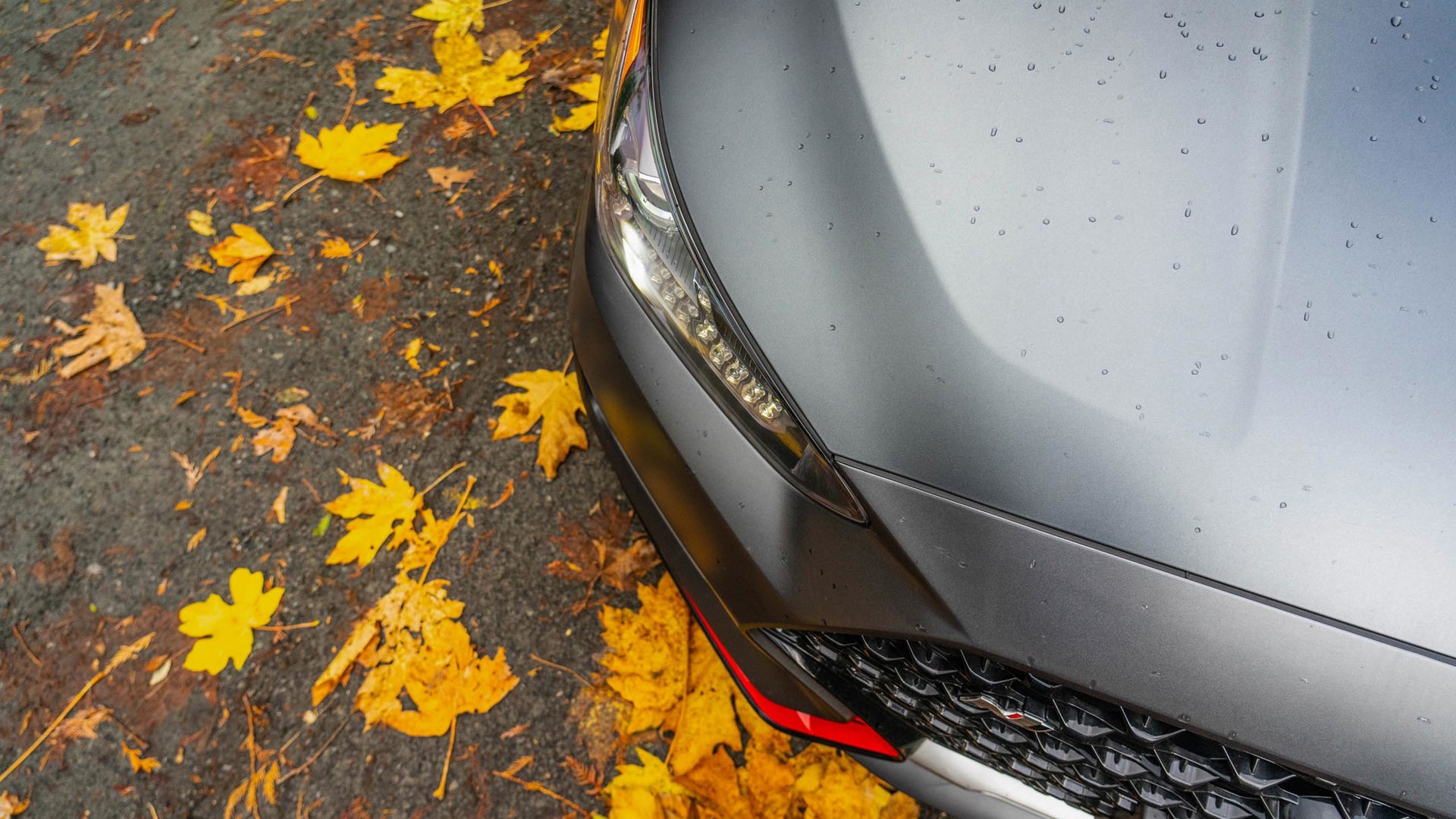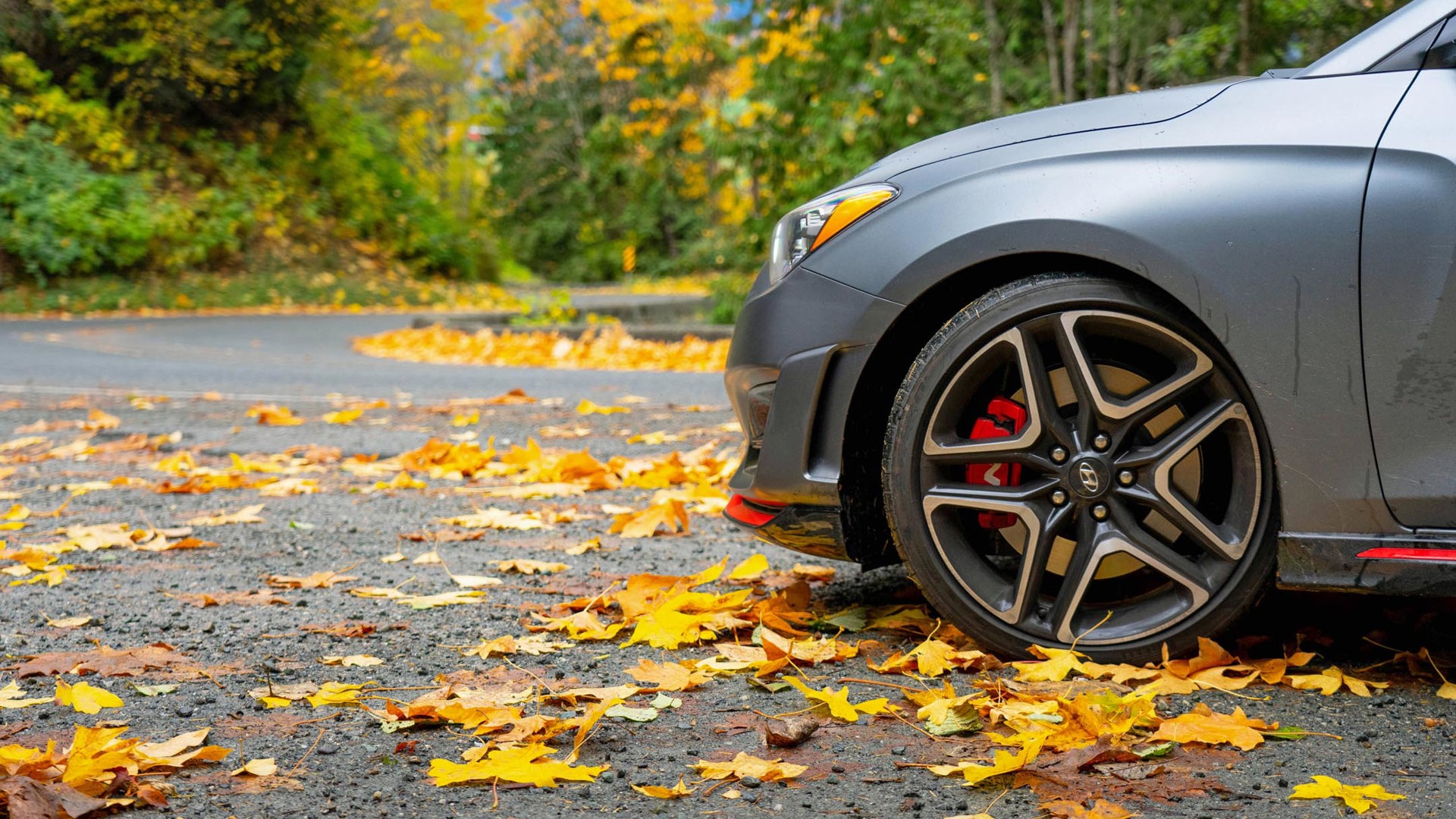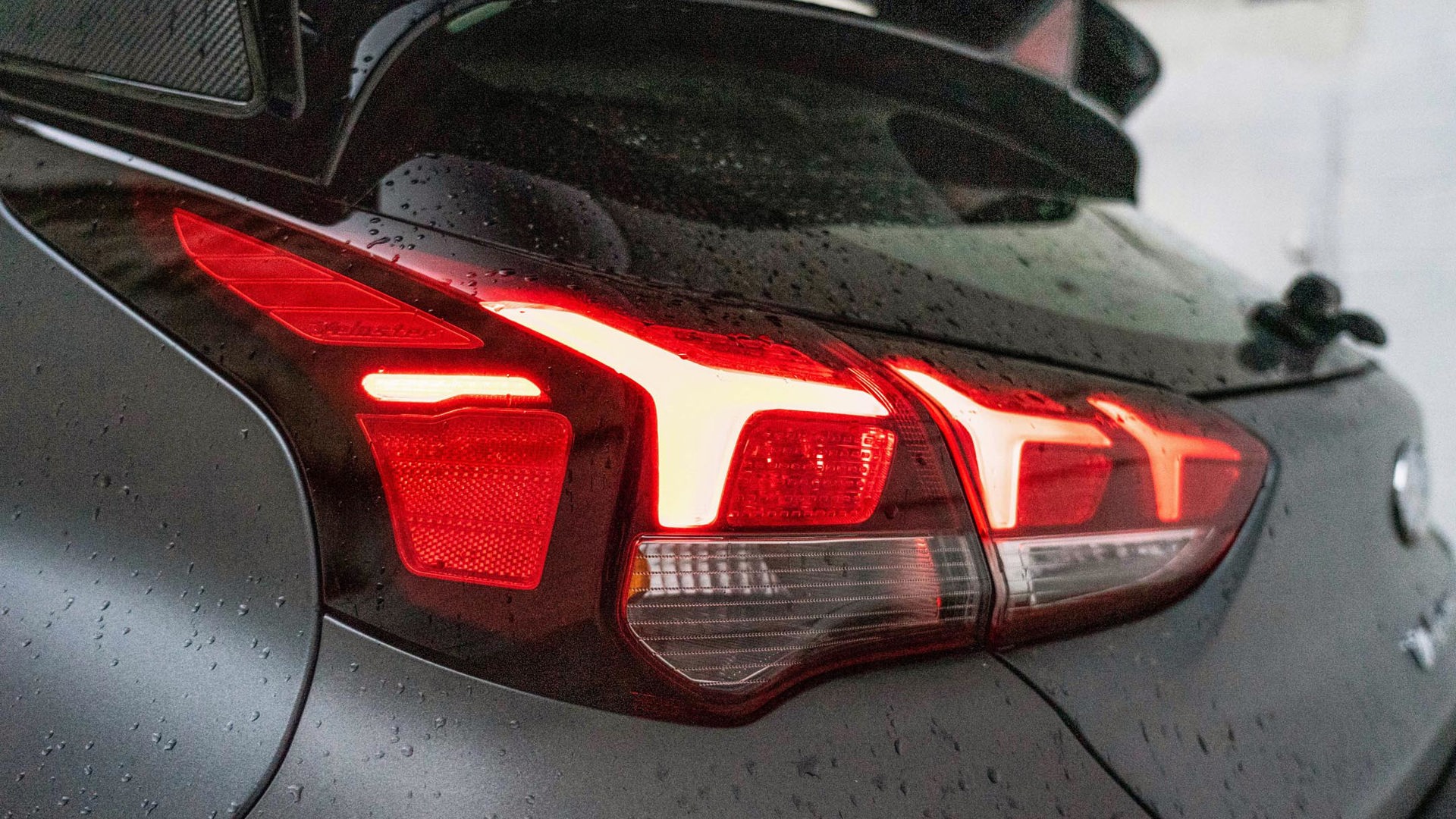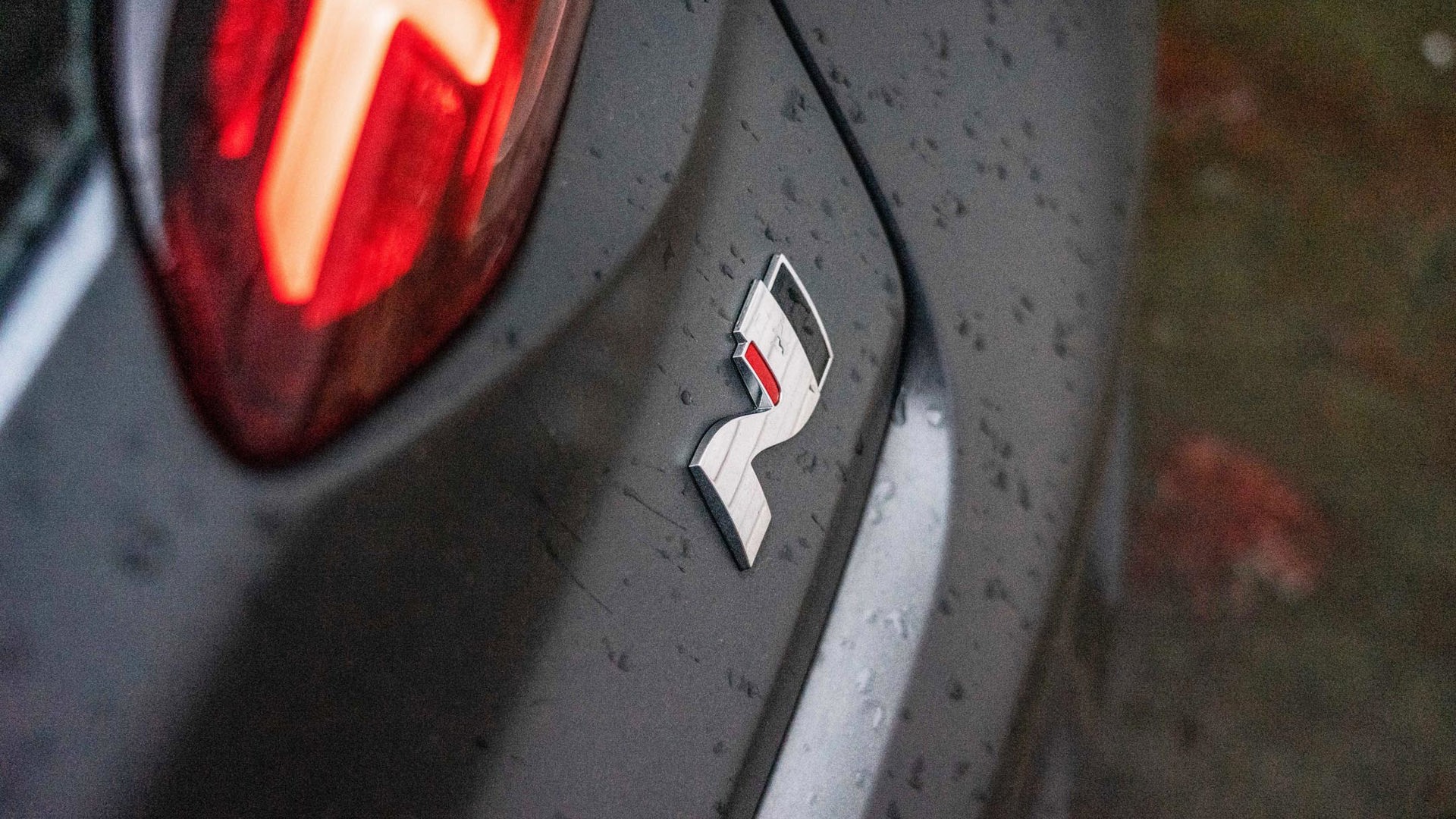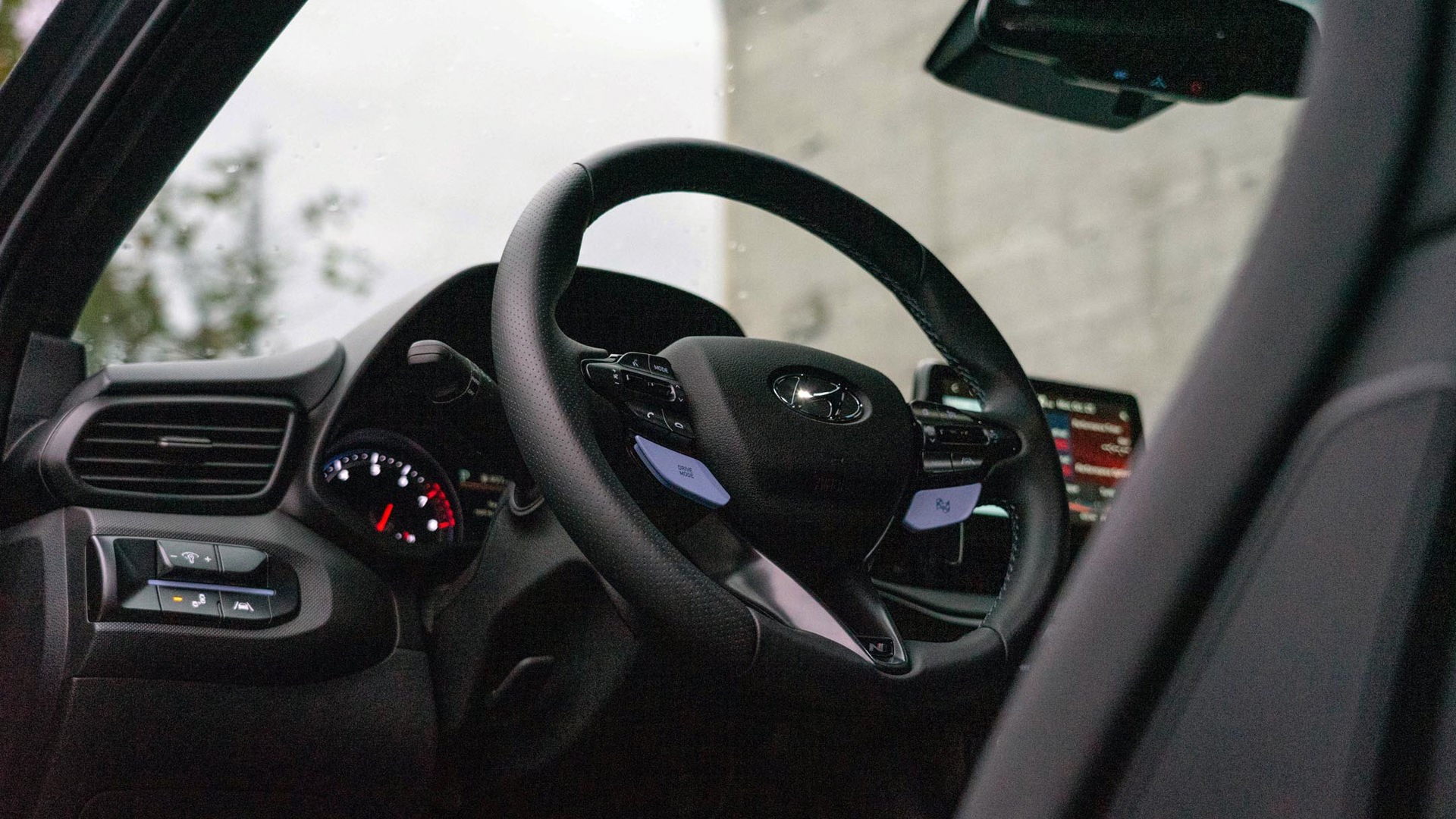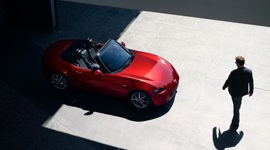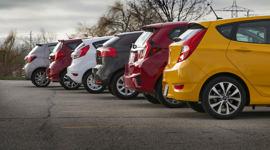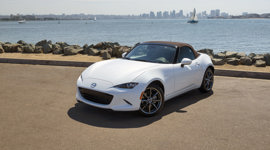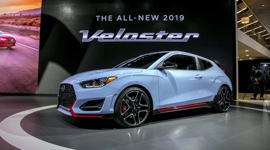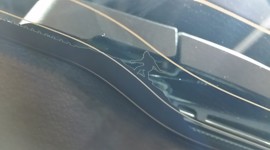For a children’s pastime, the actual “squid game” from which the recent Netflix series takes its name is a violent pursuit. Known by a handful of terms depending on region, South Korea’s ojingeo is less an established tradition, and more a collection of rules formed around pushing and shoving; memories of its childhood carnage formed a dark inspiration for series creator Hwang Dong-hyuk. It’s best described as hopscotch crossed with sumo wrestling, two teams struggling to push the enemy across a forbidden line and to their doom. A Korean dance of aggression performed with one foot – now available in car form.
With a snap and crackle of throttle overrun, the fierce little Veloster N dives into a corner and blasts on scrabbling front tires. A couple of quick taps on the paddle shifters and the boosted four-cylinder engine settles into a contented hum, having made short work of a leaf-strewn country lane. From behind the wheel, the car’s a clear winner, complete with a new dual-clutch transmission that lets you kick butt in the corners with just your right foot. Call it the champion of the skid game.
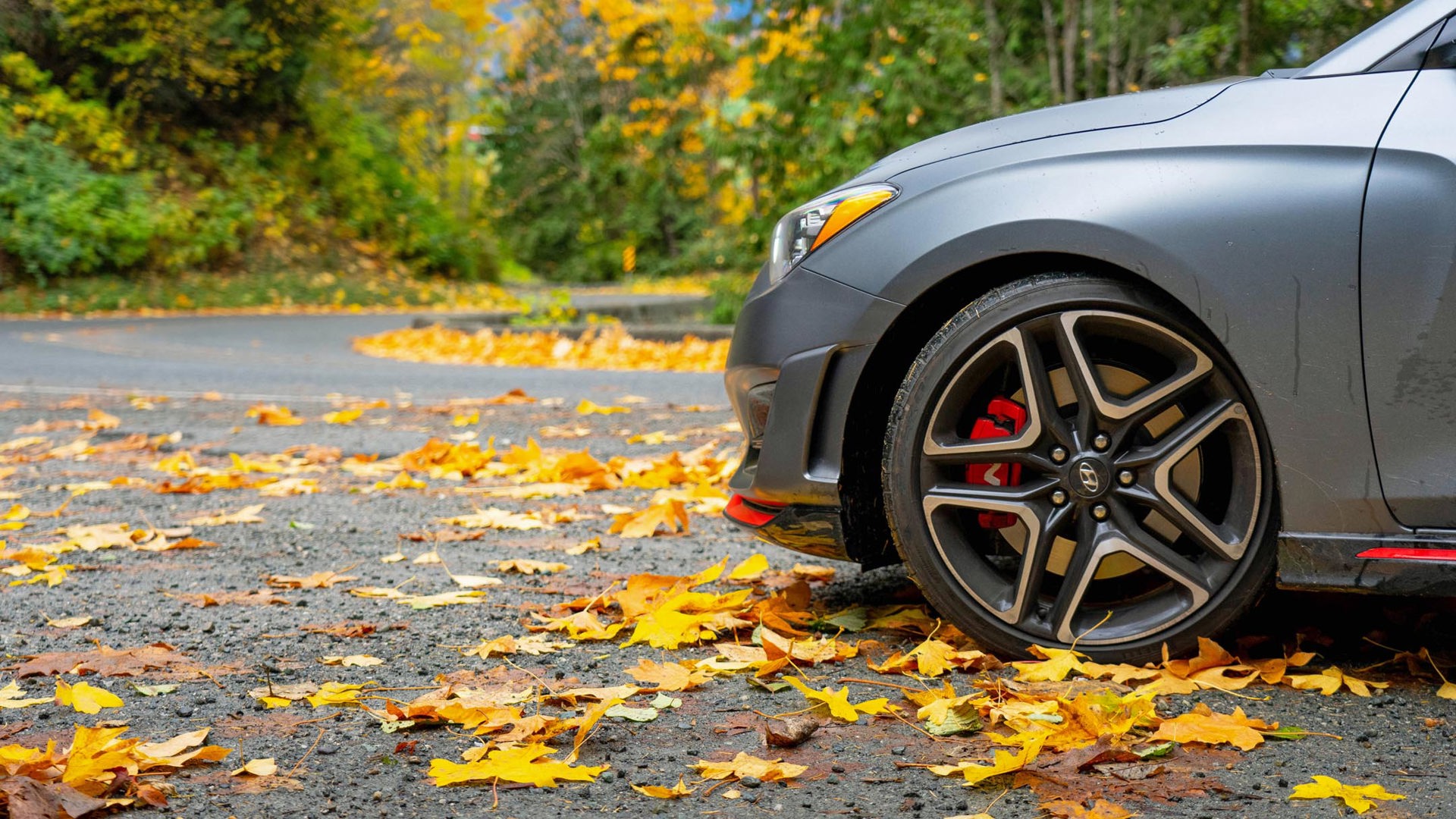
Squid Game is extremely popular, but it’s just the latest entry in a rising trend of imported Korean culture. Let’s underline just how much of a success the series is: watched in more than 142 million households since its launch in mid-September, it’s more than seven times as popular as the juggernaut Game of Thrones series at its debut. Add the Oscar-winning triumph of the film Parasite, the immense influence of K-pop, and even Canadian-made gems like Kim’s Convenience, and the culture of South Korea seems to have gone fully mainstream.
If it seems sudden, then perhaps that’s just the ever-more-porous nature of our digitally connected worlds. And perhaps it’s a case of what happened with this Veloster N, in that sometimes we don’t notice things until they’re right under our noses. Before we had Squid Game, we had Oldboy and The Host. Before this little firecracker of a hot hatchback, the now-decade-old fifth-generation Elantra established the idea that small Hyundais could offer more than just value by winning the 2012 North American Car of the Year award.
It is true, however, that the growth of the Korean-Canadian community is a more recent development. There is no official Koreatown in B.C., although the immigrant population has been growing steadily since the mid-1990s. In Coquitlam, I park the Veloster outside the Hannam Supermarket complex, and join the line for a food cart selling fresh-made bungeoppang. Not a squid, but a little custard-filled waffle shaped like a carp.
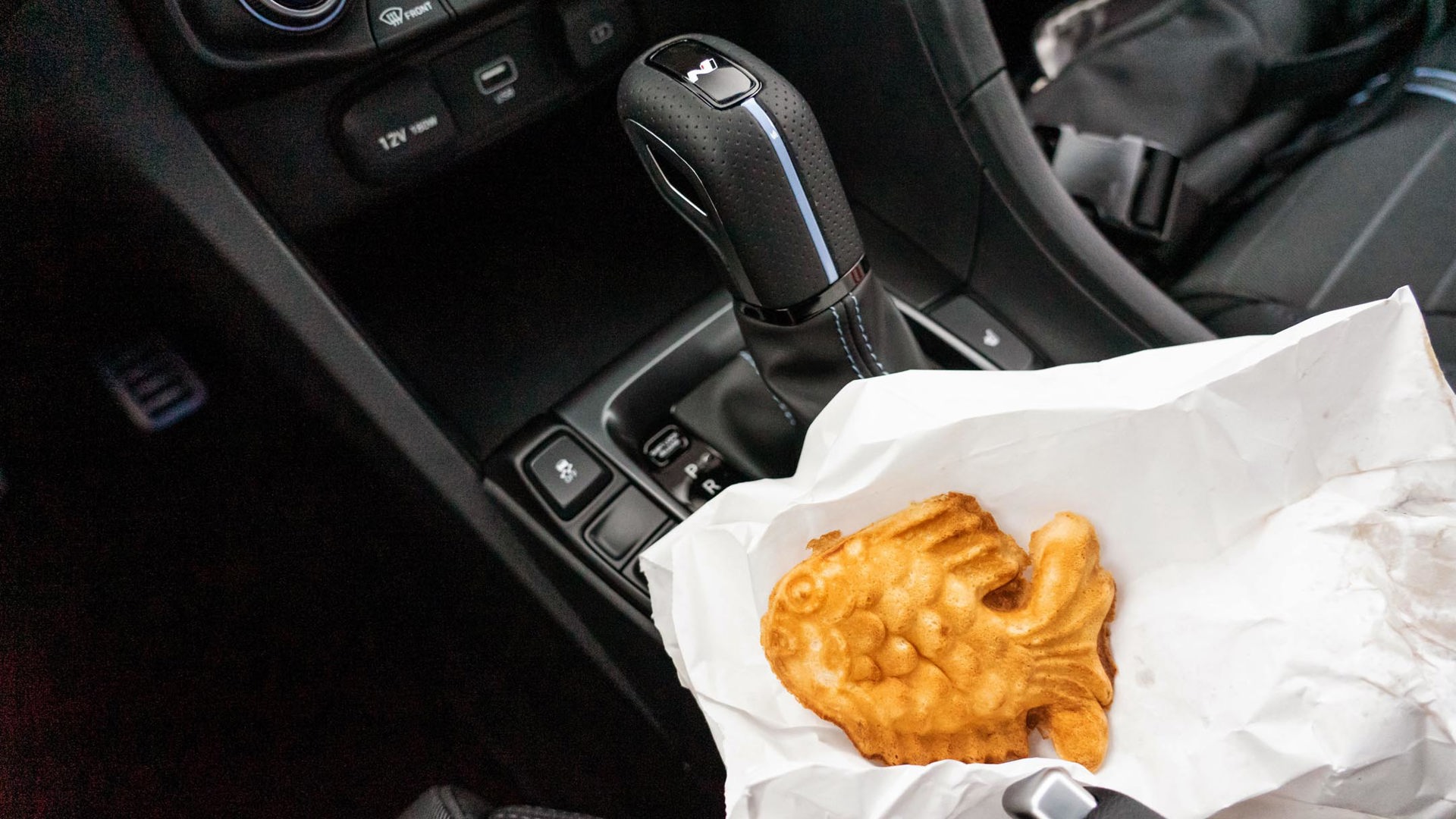
There are all manner of Korean business clustered here on both sides of North Road, everything from travel agencies to banks to opticians. And, of course, there are plenty of restaurants to choose from. On a weekend, the place is thronged with shoppers. A poster advertises a local week-long festival celebrating Korean culture in Vancouver from traditional food to taekwondo.
Korean culture, both the traditional and the hyper-modern, is clearly flourishing here. The pulse of Korean car culture is a great deal harder to put your finger on. Canada has imported all kinds of overseas car culture over the years: tweedy Brits and their MGBs, oil-stained Italians with plucky Fiats, the beret-clad French and their delightfully odd Citroëns. But where you can take something like the just-launched Acura Integra and know that it both descends from and must live up to decades of a pan-Pacific Japanese car culture of performance and customization, it’s harder to see where something like the Veloster N fits in.
South Korea has some homegrown car culture, but it’s hard to spot on the ground. Extremely strict laws govern everything from modifying your car (mostly illegal) to learning to drive a stick shift (a special licence is needed). Visit a place like Seoul, and you’ll find a bland sea of nearly new Hyundais and Kias, almost all of them black, white, or silver. The most commonly found accessory is tiny blue squares of foam, stuck to door edges to prevent parking lot dings.
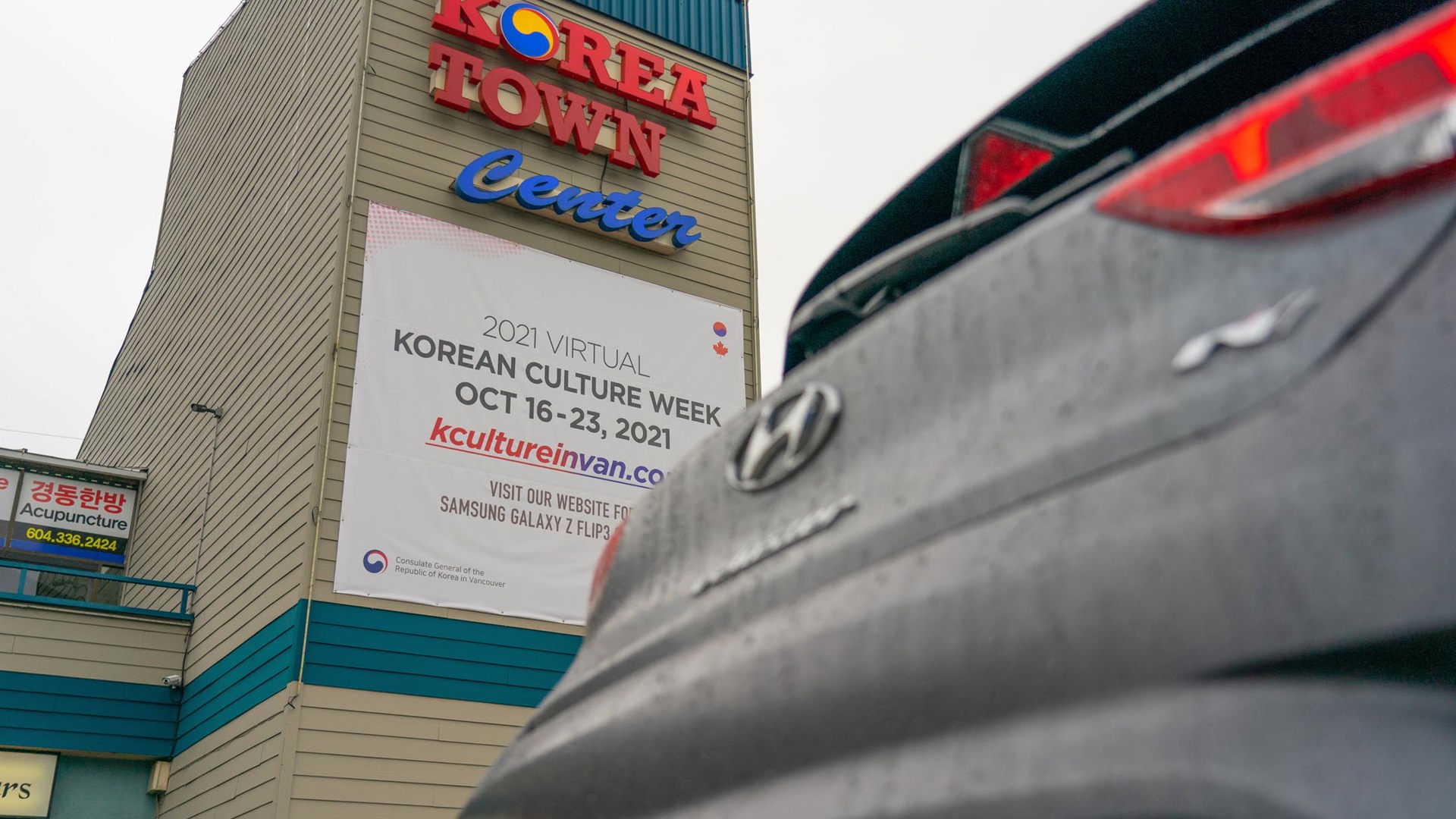
A local Vancouver downhill skateboard manufacturer once told me that South Korea was a huge market for their company, specifically for smaller trick boards. Young people hop trains from miles around and congregate in squares to dance on their boards, performing tricks and showing off. Contrast this single example of Korea’s vibrant modern street culture with the dull traffic filing past. Shouldn’t Hyundai only be good at making the wheeled appliances that fill Korean streets?
Let’s talk about putting processed cheese in your ramen for a second here. When chef Roy Choi published a recipe for his “Perfect Instant Ramen,” in the New York Times cooking section more than a few people raised their eyebrows at the inclusion of two slices of American cheese. Processed cheese? In ramen? In New York City?
Here’s what the commenters didn’t know. Putting processed cheese in your soup is a form of austerity food. In the aftermath of the Korean War, South Koreans scrimped and saved and made do. If ration-style American cheese was what home cooks could get their hands on, then in it went for much-needed calories. After a while, an adaptation became a comfort food. (Also, it’s weirdly delicious – don’t knock it until you’ve tried it.)
This is where the Veloster N comes in. Hyundai is a company founded on importing know-how and making do with what you have. When the first Pony went into production, some of the factories didn’t even have indoor heating yet. The cars were a mishmash of Ford chassis and Mitsubishi powertrains. Hyundai made it work somehow.
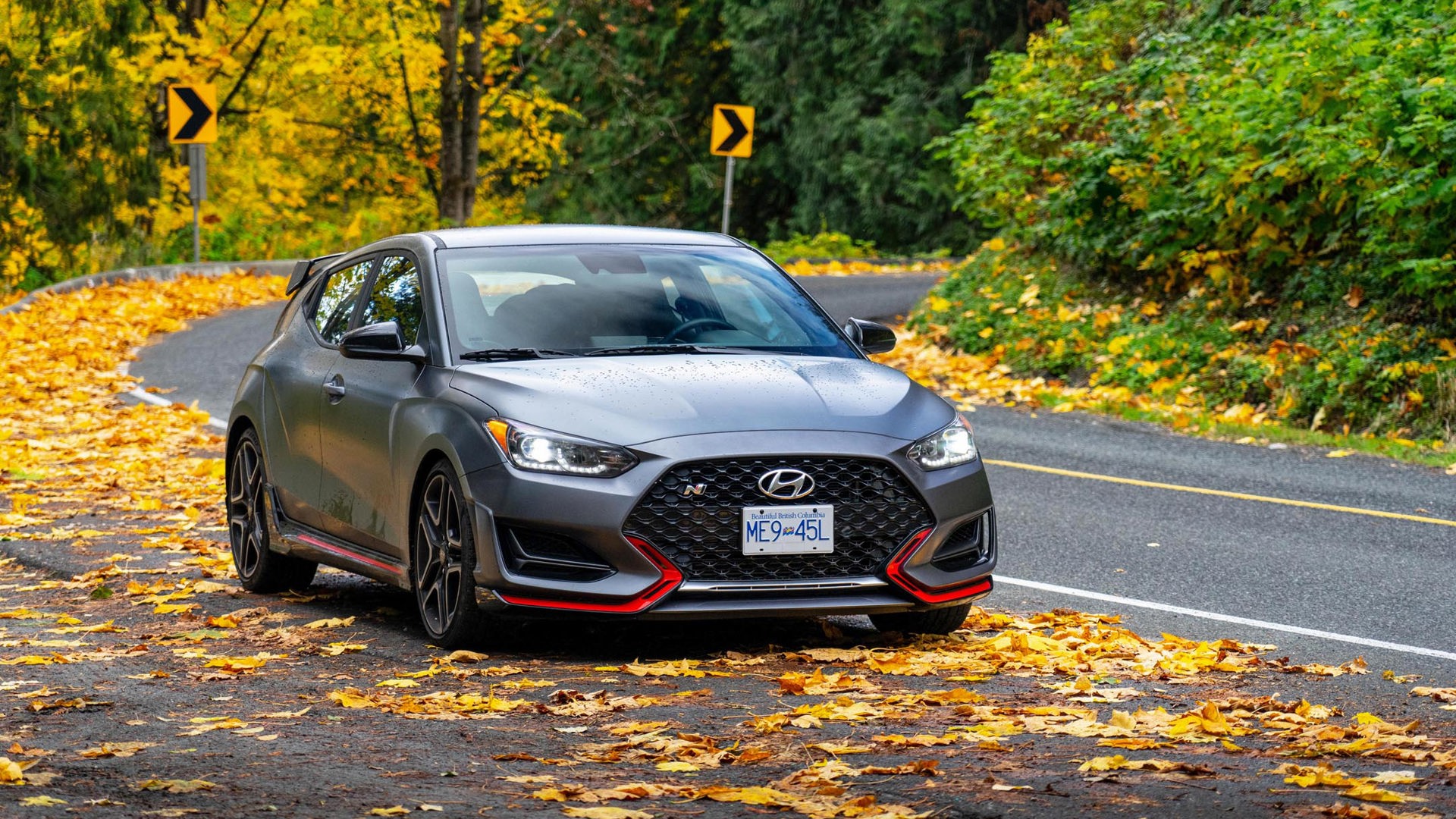
The Veloster N is that same cheese-soup idea, more rigorously applied. Take an oddball Elantra-derived three-door asymmetrical hatch – there’s a reason nobody else has tried this – and add a turbocharged 2.0L engine and a dual-clutch transmission that’s not much different from the one found in a family-oriented crossover. Then, hire former head of BMW’s M division Albert Biermann to oversee the soup-stirring. Biermann and his team ordinarily get the lion’s share of the credit here, but there are legions of Hyundai engineers working here to create a car the entire company can be proud of.
The resulting Veloster N is so good partially because it’s free from the inertia of corporate history. If Acura makes a Type-S version of the Integra, it’ll have to go toe-to-toe with the old Integra Type-R, a car that offers the kind of raw driving feel that would never get past modern safety and emissions standards. The Veloster N – in fact, the entire N lineup – is the part of ultramodern South Korean culture that’s able to run in parallel to tradition. You don’t measure it against the Pony, it’s modern automotive manufacturing, delivering excellence in the moment.
Back out on the country road, there’s something else too. Squid Game posits a world where the down-on-their-luck engage in a desperate fight for survival to amuse the rich. The games themselves will make you hold your breath, but there’s a message behind the tension. It’s a theme common in recent Korean cinema and television, an exposure of the widening gap between rich and poor, and the struggles of the class system.
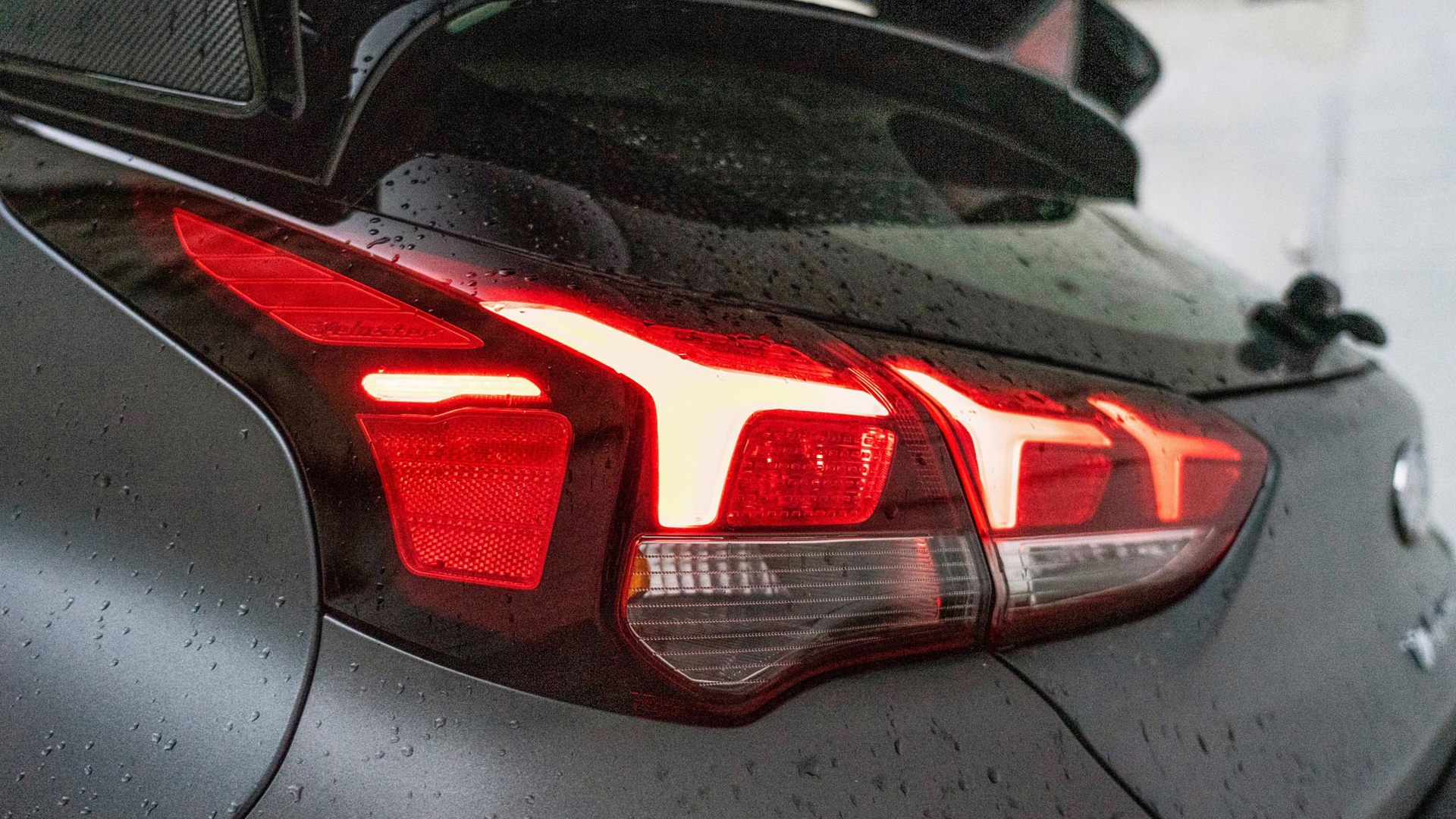
The Veloster N is not exactly inexpensive, sitting between a Volkswagen GTI and Golf R in price. Those are the logical German comparisons, but something is happening in modern cars that punches the Veloster N up a couple of notches.
Just as the fictional ultra-wealthy spectators of Squid Game are bored by the ease of their lives, so too it goes with the performance envelopes of most high-powered sports cars these days. The question is too often not, “Can the car do this?” as it is, “How big is the fine going to be?” More power is great on a speed-oriented track like Willow Springs raceway, but it’s a liability on the street.
Despite an engine with a nothing-special 6,700-rpm redline and the side profile of a basketball shoe, the Veloster N offers more exhilaration from behind the wheel than cars that put down twice the power. Especially on a leaf-lined backroad, it’s got all the pace you can reasonably use, and besides which seems to have more of a personality than a GTI. It’s fun, and as we move toward a future of 1,000-horsepower, 4,000-kg electric super-sedans, fun is one thing in short supply.
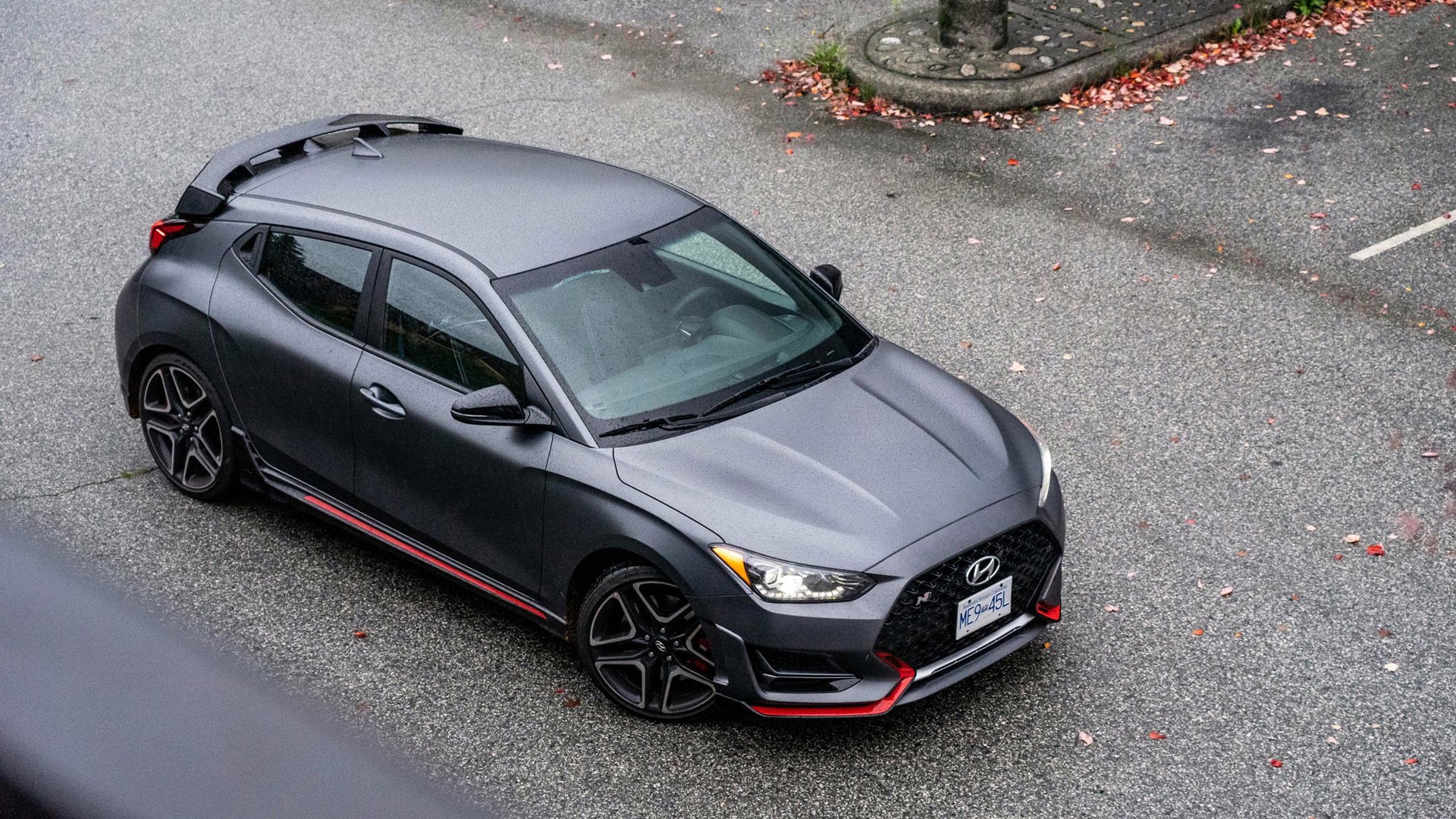
If you’ve not seen it, I won’t spoil the ending of Squid Game for you. Suffice to say that it looks like we’ll be getting a second season. Success merits further investment.
As for Hyundai, the N division keeps rolling out the hits. The Elantra N takes the fight to the likes of the Honda Civic Type R, and the Kona N will likely be a successful attempt at bridging the gap between the traditional hot hatchback and the always-hot crossover market. Mercedes-AMG did it first with the GLA 45, but the Kona N offers arguably more intensity, priced for the rest of us.
With the regular Veloster discontinued for the 2022 model year, it seems unlikely that the Veloster N will be sticking around showrooms much longer. But it has fulfilled its mission. A surprising success, outperforming the giants. A riotous delight, better than it has a right to be. Like Squid Game, the Veloster N is the thrill ride no-one saw coming. But the next instalment of each won’t have the advantage of surprise: our expectations have been set. Let the games commence.
